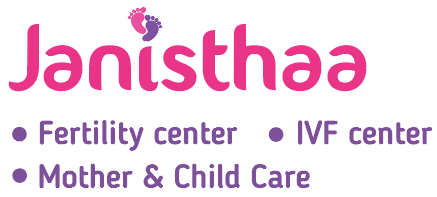Introduction:
IVF stands for “In Vitro Fertilization,” a fertility treatment where eggs are retrieved from a woman’s ovaries and fertilized with sperm outside the body in a laboratory. This fertility technique is offered to patients to optimize their chances of pregnancy. However, IVF isn’t a quick process.
It consists of multiple steps, such as harvesting eggs from the ovaries, combining them with sperm in a laboratory, and then transferring embryos back into the uterus. Whether you’re facing fertility issues or just want to learn more, understanding the stages of IVF is key to navigating this assisted reproductive technology.
This article will explore the five phases involved in IVF.
What is IVF?
IVF is the most common assisted reproductive treatment, which involves taking an egg from the woman’s ovaries and mixing it with sperm in a lab. Then, the fertilized egg, called an embryo, is placed back into the woman’s womb to grow.
The procedure can be carried out using sperm from the partner of the woman who provided the egg or sperm from a donor. IVF is often used when:
- The woman’s fallopian tubes are blocked or damaged.
- The woman has endometriosis.
- The man has fertility issues.
- Couples have been trying to conceive for a while without success.
- Other fertility treatments like IUI haven’t worked.
- The woman is experiencing fertility problems.
For some women, it may take multiple attempts for the IVF treatment to succeed, while others might get pregnant quickly. This depends on age, remaining eggs, and overall health and lifestyle. A typical IVF cycle lasts about four weeks, including the time until pregnancy is confirmed.
What Are the Five Stages of IVF?
IVF typically involves several stages. While the specific protocol may vary depending on the clinic and individual circumstances, here are the five general stages:
1. Ovarian Stimulation
Ovarian stimulation, also known as controlled ovarian hyperstimulation (COH). The phase involves taking special medications (hormones) such as follicle-stimulating hormone (FSH), luteinizing hormone (LH), or a combination of both. Hormones can be administered through injections, pills, or, in some cases, as a nasal spray. This is a critical step is crucial as the number of eggs needed for the retrieval process increases.
Normally, only one egg matures during a menstrual cycle, but more eggs can be collected with stimulation. With more eggs collected, there’s a higher likelihood of obtaining viable embryos. This in turn improves the likelihoodof a successful pregnancy through IVF treatment.
2. Egg Retrieval
During egg retrieval in IVF, doctors use a tiny needle to get eggs from the ovaries. Using transvaginal ultrasound guidance, a thin needle is inserted through the vaginal wall and into each ovarian follicle.With the help of ultrasound, they find the follicles where the eggs are and gently pull them out.
To make sure the patient doesn’t feel any pain, they’re usually given medicine to relax or put to sleep during the procedure. It’s a quick and simple surgery done with care to keep the patient comfortable. Afterward, the eggs are taken to the lab for fertilization, moving one step closer to helping someone become a parent.
3. Fertilisation
After collecting the eggs, they’re combined with sperm in a lab dish, a step called insemination. Through this phase the sperm is fertilisedwith the eggs naturally. On the day of egg retrieval, your male partner or a sperm donor needs to provide sperm for fertilizing the eggs in the IVF lab. The person giving sperm should avoid ejaculating for three to five days before the retrieval.
In cases of male infertility, regular methods of fertilization might not work. If sperm counts are low or previous IVF attempts haven’t succeeded, special techniques such as intracytoplasmic sperm injection (ICSI) might be used to help sperm fertilize the eggs.With precision under the microscope, the embryologist delicately selects a single sperm and skillfully injects it directly into the awaiting egg.It ensures that the egg gets fertilised even if the sperm cannot reach or penetrate the egg on its own.
The dish is monitored closely to see if fertilisation happens. This procedure takes place within a few hours. This pivotal stage holds immense significance as it decides the formation of embryos, marking a significant stride in advancing the IVF procedure towards the prospect of potential pregnancy
4. Embryo Culture
As women age, fertility naturally declines. IVF becomes a preferred option for those at an advanced maternal age, providing a higher chance of successful conception by carefully managing the fertilization process and embryo selection.
5. Embryo Transfer
In the final stage of IVF, one or more healthy embryos are transferred into the woman’s uterus. After retrieval, the transfer of the embryo to the uterus is done within 5-6 days. Starting the day after the egg retrieval, the individual takes a progesterone supplement to prepare the uterine lining for embryo attachment.
Progesterone is given as a daily injection or as a vaginal gel.This process continuesuntil the pregnancy test is conducted. Following this, using a small catheter, the embryo is inserted into the uterine cavity through the cervix. Typically, anesthesia isn’t needed for this procedure. Sometimes, a small amount of Valium is administered to aid in uterine relaxation. After the embryo transfer, the doctor suggests being on bed rest for the remainder of the day.
Should the procedure prove successful, the embryo will attach itself to the uterine lining, initiating pregnancy. Any remaining embryos of good quality may be frozen for future use.
Visit Janisthaa to Consult the Best IVF Doctor in Bangalore
IVF is a complex yet effective path to parenthood. Despite its challenges, the reward of a healthy baby makes it worthwhile. With patience and positivity, IVF can fulfill your dream and Janisthaa can help you in this journey.
At Janisthaa, we are a reputed fertility clinic led by Dr. Shwetha Y Baratikkae, counted among the best IVF doctors in Bangalore. We’ve been pivotal in assisting countless couples in overcoming fertility hurdles and realizing the joys of parenthood.

